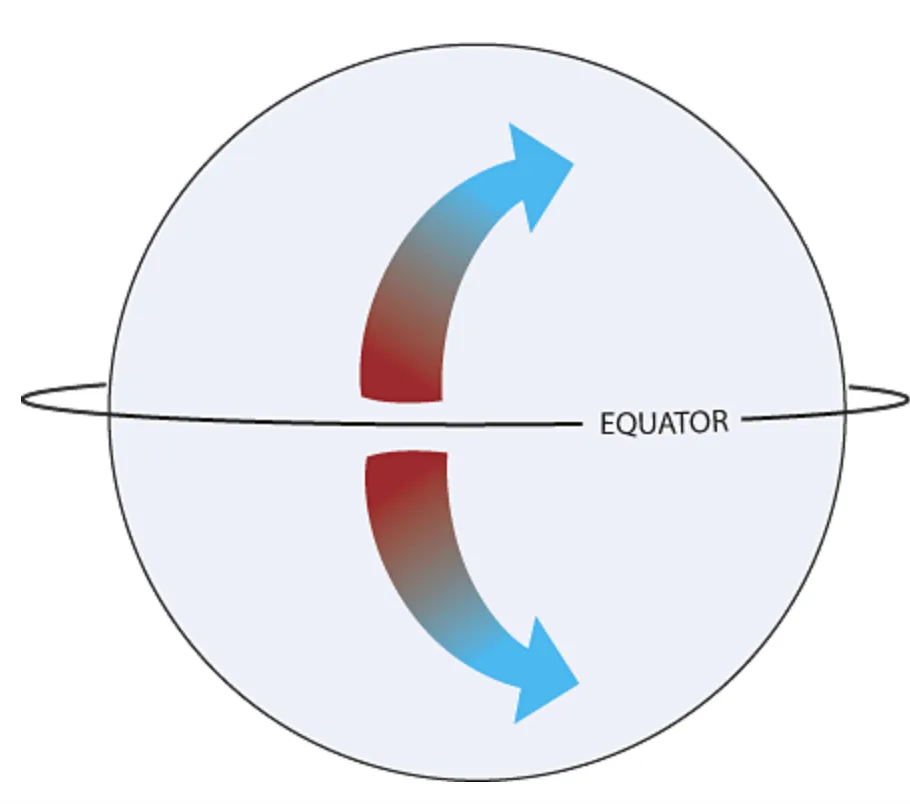
One hurricane ever? Why the South Atlantic is a dead zone for hurricanes
Colder waters, disruptive winds, a missing wave train and lower Coriolis force form a near-perfect storm shield, meaning hurricanes in the South Atlantic are more myth than reality.
If you pay close attention to the Atlantic Ocean during hurricane season every year, you will notice certain areas are more prone to tropical storm development and paths than others.
For example, if you look at the pathways of past tropical storms, you won't find any tracks west of South America and very little east of the continent.
In fact, official records only have one documented hurricane occurring in the South Atlantic, locally named Catarina, which formed off the coast of Brazil in 2004. The storm killed three people and caused $US300 million in damage after landfalling near northeastern Rio Grande do Sul. As well,
SEE ALSO: Why no hurricane has ever crossed the equator

Why is there little to no tropical activity in that part of the ocean? There are multiple factors that contribute to a quiet South Atlantic while the North and other sectors of the ocean are teeming with tropical storms and hurricanes.
Lack of warm waters
When they look for hits about potential tropical development in the summer and autumn months, meteorologists will examine long-range trends in factors like ocean temperatures, wind shear, and West Africa’s monsoon season.

While most of the Atlantic basin is experiencing very warm waters, an ongoing trend for the past couple of years, the west coast of South America is a different story. The cold waters surrounding the coast can be attributed to the lack of activity near the continent, according to AccuWeather.
The Humboldt Current, also referred to as the Peru Current, in the southeastern Pacific Ocean spreads cold water abnormally far north along the continent's west coast––certainly making it too chilly for tropical storm and hurricane development. For that to happen, water temperatures need to be at least 26 C for tropical storms to form and intensify.

Too much wind shear in the region
Another reason why the South Atlantic is nearly a ghost region when it comes to tropical storms is wind shear, and too much of it.
Wind shear can mark the end for a developing tropical cyclone as it can eliminate thunderstorms at the core of the system before they can take root.

When it comes to wind shear, the Southern Hemisphere sees a higher concentration of it due to a greater temperature gradient compared to its northern counterpart.
Avoids the 'wave train'
The next factor is a the African wave train--a parade of low-pressure systems that emerge from the African continent and move westward across the Atlantic Ocean.
The systems, or clusters of thunderstorms, can then strengthen further and become tropical depressions, storms or hurricanes.

According to AccuWeather, approximately 80 per cent of major North Atlantic hurricanes develop in this area, a "conveyor belt of tropical seedlings" that is missing from the South Atlantic.
SEE ALSO: Why you'll never hear of a hurricane with these names
Records may have missed tracks of historical storms
In addition to Catarina, only two more unnamed tropical storms have been documented traversing the southern Atlantic basin--in 2010 and 2011.
However, it should be noted that records in the other basins of the Atlantic date back to a much longer time frame, 75 to 150 years, so the chances are good that many storms in the South Atlantic were never tracked.

(NOAA)
After those explanations, it might come as no surprise then that hurricanes can't cross the equator into the Southern Hemisphere.
The Coriolis effect likely plays a part because it is essentially zero due to its geographical placement. While it doesn't influence small-scale movements, it has a significant impact on global weather patterns and ocean currents, particularly hurricanes.
At the equator, hurricanes lose their spin. Without the Coriolis effect, they simply can’t take shape
WATCH: Why don't hurricanes cross the equator?
With files from Nathan Coleman, a video journalist at The Weather Network, Tyler Hamilton, a meteorologist at The Weather Network, and AccuWeather.
